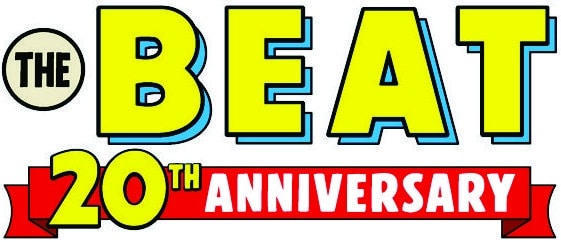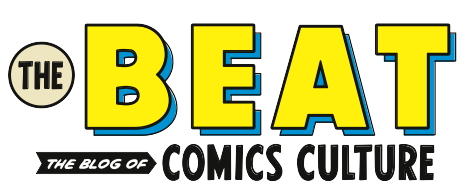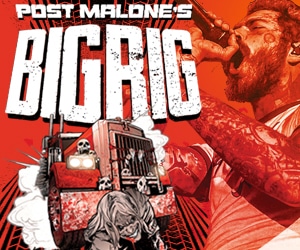As noted several times here at The Beat, pro wrestling moves at breakneck speeds and doesn’t really slow down or reboot for anybody. This can be difficult for newcomers to latch onto, but it also makes some things difficult to examine if you’ve been a fan a long time as well. With Wrestlemania 40 having just passed, that means that Wrestlemania 30 is officially 10 years old and seemingly took place an entire world ago in the wrestling business. Add in the ever-present state of the internet and you’ve got a giant murky soup where no one knows when anything happened.
While much has been made in wrestling circles of notable storylines of a decade ago like CM Punk walking out of the WWE and WM 30 and the fallout of said event (ending of Undertaker’s Streak, apex of the Yes! Movement, etc.), we wanted to take a look at some things that may have become lost in the vortex of the universe’s ultimate independent variable: time. These won’t necessarily be the most “underrated” things, but perhaps things that you might not have thought about and give great context to where wrestling was and where it is 10 years later.
- The Shield Break Up; Lay The Groundwork For The Decade
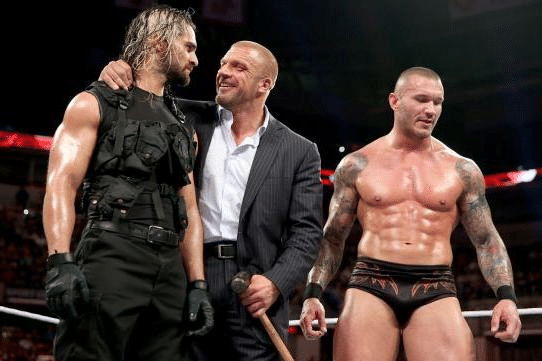
On June 2nd, 2014, Seth Rollins did the unthinkable and turned his back on his Shield brothers Dean Ambrose and Roman Reigns. This isn’t exactly an uncelebrated moment in wrestling or WWE history considering the ripples still being felt to this day because of this betrayal, but the fact that it was ten whole years ago kind of feels insane. In fact, I’ve already written pieces on it and I ain’t close to being done yet.
It is impossible to ignore because the remainder of WWE in 2014 was driven by heel Seth Rollins trying to avoid comeuppance any way he could from Roman and especially Dean. All three men would become permanent main event fixtures in WWE, and then when they brought the story beats back for Rollins and Ambrose to finally settle their differences a few years later, the feud was so lackluster and heartbreaking for Ambrose that it synched his decision to leave the company.
Couple months later, Ambrose would debut for All Elite Wrestling as his former name Jon Moxley and represent an absolute paradigm shift in the pro wrestling landscape that legitimized and galvanized the entire idea of AEW. Meanwhile, Rollins would become the most consistent in-ring presence in the company and Reigns would flounder in his attempts to be the face of the company – only to succeed tremendously by becoming the promotion’s top heel from 2020 forward.
The story beats of the original Shield betrayal were at the bedrock of Roman’s heel mindset, to the point that the knife-in-the-back chairshot was referenced not once but twice, including at Wrestlemania 40. The paranoid Roman, easily still affected by the trauma of his closest friends turning on him, became a monster that only Cody Rhodes could slay ten years later…and only with the help of Seth Rollins.
- NXT Arrives and Takes Over
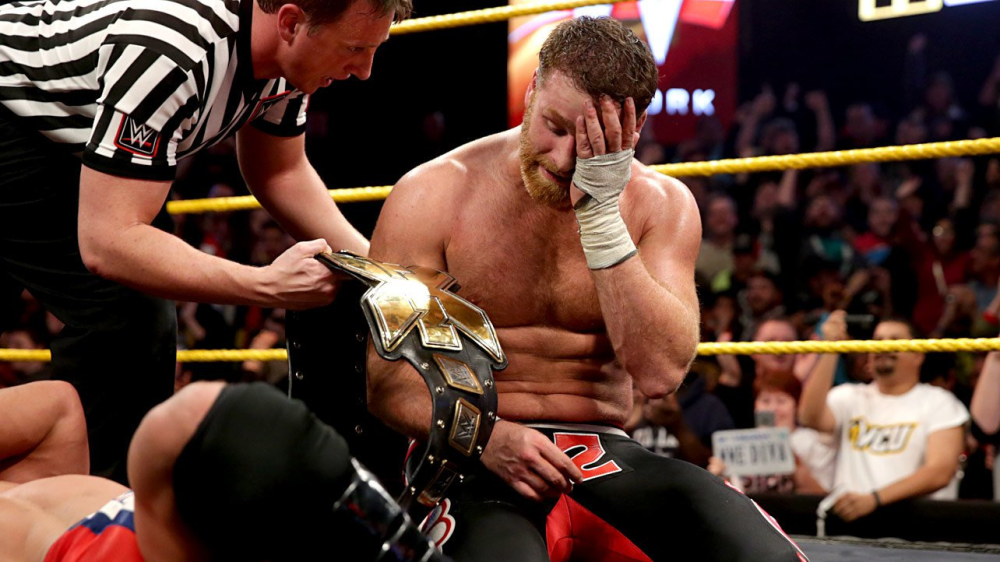
A decade ago was essentially when NXT evolved into the NXT that we know it as today, with a quartet of Network-exclusive specials helping facilitate that final evolution. The first of these was NXT: Arrival, which had Adrian Neville (better known as PAC before and after his WWE run) end the then-record setting NXT Championship reign of Bo Dallas. This was in February 2014 and was marketed as one of the reasons to get the WWE Network, along with Wrestlemania 30.
Later that May, NXT hosted its first ever NXT TakeOver event, a series of which would become mainstays of the brand for the next several years. At this particular event, Charlotte Flair would win her first piece of gold in WWE, becoming the new NXT Women’s Champion. That title was vacated thanks to the previous champion, Paige (the current Saraya), winning the WWE Divas Championship on her first night on the main roster. In September, we got TakeOver: Fatal 4-Way that was more like a building block show, but the end of the year gave us TakeOver: R Evolution, one of the most important shows in NXT history (and possibly modern WWE history, given the context).
This incredible event saw the WWE debut of Kevin Owens, the TakeOver debuts of Japanese wrestling breakouts Hideo Itami (better known as KENTA) and Finn Balor, and Sami Zayn finally “finish his story” and win the NXT Championship in a Title vs. Career match that gave us that feel-good finish. What cemented it, however, was during Zayn’s post-show celebration when his best friend Kevin Owens destroyed the jubilant new champion in front of the entire celebrating NXT locker room. These specials in 2014 would lay the groundwork for the NXT we know and love today, as the brand would absolutely explode in popularity and relevance in 2015.
- Wrestling Goes Streaming

Speaking of the WWE Network, that launched in 2014 as well, which represented a huge shift of how pro wrestling did things. Being the biggest name in the wrestling game since 2001, WWE was a huge piece of the Pay-Per-View market. They would more or less pull out of that by introducing the $9.99 WWE Network, which would have tons of content but most importantly host every single WWE PPV live.
It may seem a bit trite in comparison to today, where every distributor has or desires their own streaming service, but in 2014, this was an incredibly unconventional move. It wound up succeeding well enough, that NJPW did something similar in December of that year, creating NJPW World, which contained New Japan Pro Wrestling shows from the 70s to today.
And yet, 10 years later now as a part of Peacock+ in most of the world, the Network interface is still absolute trash.
- AJ Styles Becomes King of Japan: Joins Bullet Club, Defeats Okada For IWGP Championship
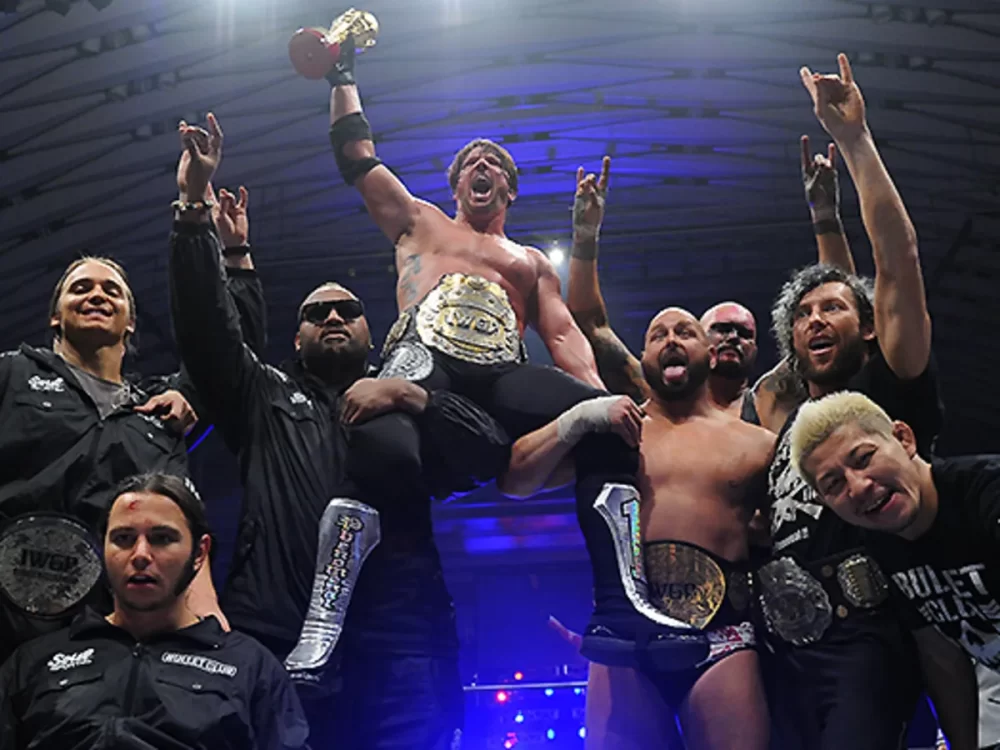
Also speaking of NJPW, one of the biggest stories of the year to come out of that promotion was the debut of American standout AJ Styles. Styles had made his name in TNA for the last decade, but was infamously disrespected heavily in contract renegotiations when his contract expired in 2013. Styles would make his shocking debut for New Japan in April 2014, becoming the newest member of the Bullet Club in the process.
A month later at Wrestling Dontaku 2014, a night that also signified the 1-year anniversary of the formation of the Bullet Club, Styles would defeat Kazuchika Okada and become IWGP Heavyweight Champion. It should also go without saying that Okada was already one of the top guys in New Japan in 2014 and would continue to be so until leaving the promotion in 2024.
Styles would hold onto the title for a solid chunk of the year before dropping it to Hiroshi Tanahashi, but his title victory was just the beginning of a career renaissance for the Phenomenal One. Styles would win the world title once again in 2015 and in the process cement himself as one of the greatest wrestlers of this generation before returning Stateside in 2016.
- TNA Gives Us “We Got Yes Movement At Home”

Yo, what was TNA doing while their former centerpiece was out reestablishing himself? If you guessed “copying WWE’s homework with none of the actual emotional build-up,” you win!
One of the only other talents who could boast the name “Mr. TNA” besides Styles was perhaps Eric Young, who was in his tenth year in the company. Like Styles, EY had been treated with some of the worst storylines and gimmicks in the history of the promotion, but unlike AJ, Young was never really perceived as a legitimate threat to anyone.
In the years leading into 2014, he was saddled with a simultaneous concussion/mentally challenged gimmick after hitting his head during a match. After getting over that, he entered a comedic romance angle with ODB, kayfabe married her, and became the longest reigning TNA Knockouts Tag Team Champions with her despite being male. To put it bluntly, Young had not been taken seriously since maybe 2010. He continued to be a glorified jobber going into 2014.
Then, with the resounding success of WWE’s Wrestlemania 30 and the outpouring of goodwill coming from Daniel Bryan’s emotional Yes Movement, TNA seemingly decided to try and squish the entire Yes Movement payoff into one night. Only a few days after Bryan’s emotional pinnacle, TNA decided to hold a battle royal to open the show, then had Young pull off a shocking win in the main event to become TNA World Champion.
It’s funny looking at this as a footnote in places like EY’s Wikipedia page, but at the time, this move was positively lambasted by fans as TNA having absolutely no originality, patience, creativity, or real understanding of their product. They took a beloved bearded cruiserweight underdog, had him win two huge matches and a world title in one night, and seemed to expect instant approval. It reeked of what had become known as “LOLTNA”.
This, together with TNA’s treatment of the outgoing Styles and the horribly overexposed Dixie Carter and Magnus becoming the centerpieces of programming, supplied enough juice for TNA to continue to be seen as a joke for the rest of the year. It would continue to be seen as a joke until about 2016 or so (although you could argue the stink of ‘LOLTNA’ clings to the company to this very day).
- #RKOOuttaNowhere Goes Viral on Vine
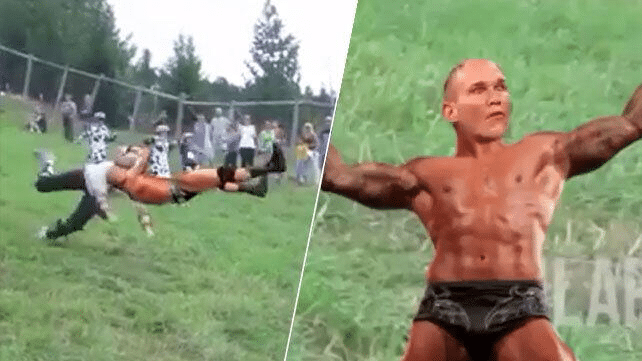
Before there was TikTok, there was Vine just like before there were internet memes, we just screamed our favorite movie quotes at our friends ironically. Randy Orton won the lottery for the internet’s transcendent meme sometime in 2014, when his penchant for hitting RKO’s out of nowhere broke out of just the pro wrestling bubble and became a mainstream gag unto itself.
Following a terrific heel run in the late 2000s, Orton would slowly wind up becoming a face in 2010 due to a variety of factors. One of these factors was that his finisher, the RKO, had gained tremendous momentum as a move that could be hit from anywhere, at any time. There was a period where it seemed weekly, WWE just wanted to find new ways for Orton to pop the move out to escape any situation and fans loved it. Orton probably loved it too because he became a face without doing anything differently as a heel.
This was already sort of a joke in the wrestling community, but with the tremendous success of Vine, what was once a wrestling inside joke bubbled to the surface and became one of the most trending memes of the year. It saw people take terribly clipped images of Orton, edit them into footage of people falling, and topping it all off with some JR or Michael Cole commentary screaming the titular move. Bonus points for those that sealed the deal by using images of Orton’s stupid faces he’d have before and after said move.
RIP Vine, ‘twas too good for this sinful earth. Also, like anything around this time, WWE was too late to cash in on the fad and when they tried, it got cringey. See also “Fandagoing”.
- Brock Squashes Cena; Draws the Blueprint for Suplex City, Summerslam 2014
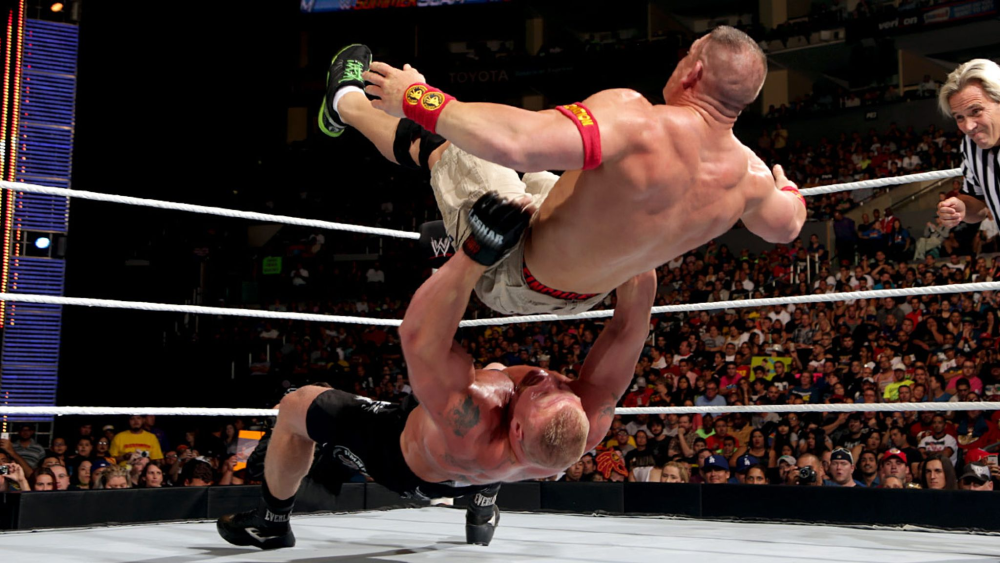
Going into Summerslam 2014, the main event scene in WWE took a hard left. After everyone was riding the high of the Yes Movement and Daniel Bryan Danielson’s massive win, he managed to defend the WWE Championship only once on PPV before needing to vacate the belt due to injury. Said neck injury was just the first in a long line of complications that would lead to Bryan temporarily retiring just two years later.
In the meantime, John Cena won the vacated WWE World Heavyweight Championship and would have to defend it against the Undertaker Wrestlemania Streak-ending Brock Lesnar at Summerslam. What many of us expected to be a Super Cena effort turned into the most laughably one sided main event extended squash match WWE had ever had to that point – with Cena as the victim.
As soon as the bell started, Brock hit his finisher on Cena, then let him get back simply because he could. What followed was 20 minutes of Lesnar playing with his food, most notably hitting a combined 16 different suplexes. Brock’s show of dominating the face of the company, just after ending Undertaker’s revered Streak, gave him the two biggest victories maybe any wrestler ever had in one calendar year. Those two wins also went a long way to serve as the basis of Brock’s character and role in the company going forward – as everyone’s insurmountable final boss monster.
The story goes that this was always going to be the kind of match that was going to be had. Brock had been slated as the Summerslam opponent to whoever the champion was at the time and the planned extended squash was originally going to be against Daniel Bryan. Given the build-up of Bryan’s injuries, it’s a terrifying thought of what could have happened had medical reports and doctors had not done what they’re supposed to do.
In more recent interviews, John Cena explained his justification for keeping the planned squash on, despite his ultra-protected standing in the company. His main reason was because Brock had just done the impossible and broke Taker’s streak, so to make sure that win meant something, he’d keep Lesnar’s dominating performance on. Doing a “50/50” or evenly fought match would be doing a disservice to both Undertaker and Brock. Whatever the reason, it gave us one of the most shocking main events in WWE history.
- Damian Mizdow, All-Star Stunt Double, Weaves Gold From Garbage

While the main event scene was full of the Shield breakup, The Authority ruling over, and the triangle of Bryan/Cena/Lesnar, the undercard was horribly lacking for most of the year. One of the biggest lowlights came when Damien Sandow, the winner of one of 2013’s Money in the Bank briefcases, was reduced to an absolute joke and later given one of Vince McMahon’s kisses of death: an impersonation gimmick.
After dressing up as Magneto on an April episode of RAW to confront special guest Hugh Jackman, Sandow would impersonate a different character every single week. Sometimes, he would even wrestle as them. He was occasionally other famous wrestlers, but mostly he was people like Abe Lincoln, Paul Revere, and LeBron James.
Late that summer, The Miz hired Sandow as his personal “stunt double”, which began as Sandow taking hits for Miz, but eventually expanded to Sandow imitating everything Miz did in the ring, including his bumps and blows. This hilarious performance endeared him to fans and made Sandow the best mid-card act in the company. He even tweaked his name to Damien Mizdow for a time.
Sandow’s incredible performance was rewarded with a WWE Tag Team Championship reign that November, something no one would have guessed that April, as everyone now prepared for the inevitable turn Mizdow would have on Miz and create an even more over babyface. This would happen in 2015, but the results were…awful.
- The Somewhat Haunting Death of The Ultimate Warrior

The headlining figure being inducted into the WWE Hall of Fame in 2014 over Wrestlemania 30 weekend was The Ultimate Warrior, a man many thought they’d never see back in the organization after his incredibly rough falling out with them in the mid-90s. He appeared on the RAW following Wrestlemania and gave an auspicious promo alluding to “when a man’s heart beats its final beat” as he thanked the WWE audience one last time.
The next day, Warrior was pronounced dead of a heart attack.
Besides the death of a notable figure in wrestling history, the entire thing had a haunting aura around it. Warrior had been in bad standing with the company for years, then seemingly made amends just before what he might have known were his last days. Warrior’s final promo will probably be featured in “famous last quote” rounds for years to come.
This sudden death, together with Warrior’s HOF speech, was the nexus of WWE’s Warrior Award, given every year to someone in the WWE fan community who displays tremendous heart and courage. A tad ironic, given the fact that Warrior the man was notoriously difficult to work with and no one who worked with him (prior to his HOF ceremony) ever had anything nice to say about him.
- Sting, the Final Holdout, Finally Debuts in WWE, Survivor Series 2014
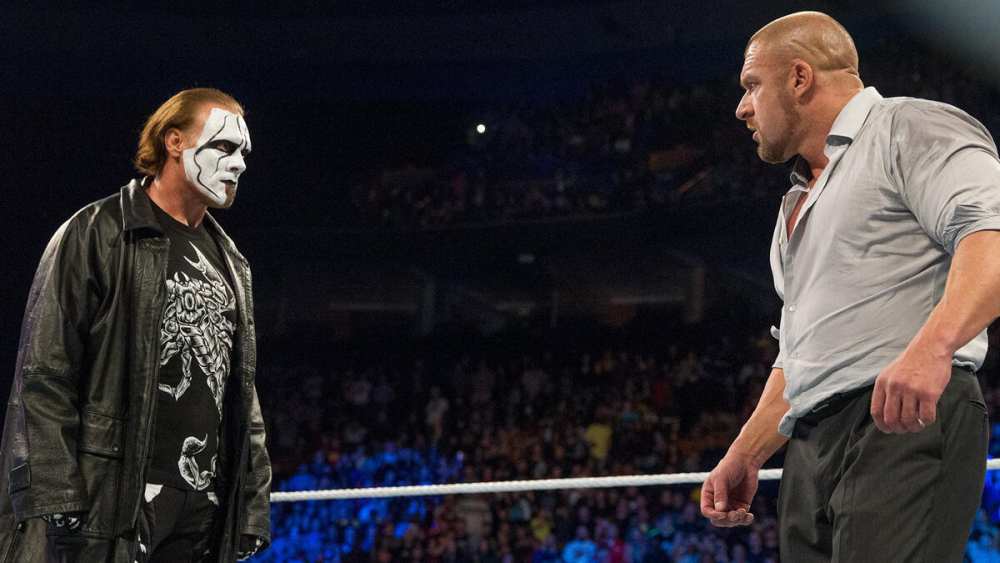
Even before Daniel Bryan’s triumph over “The Authority” at Wrestlemania 30, the corporate stable had dominated programming for most of the last two years. This combined with John Cena more or less inheriting Bryan’s (and, to a lesser extent, CM Punk’s) beef with The Authority meant that the story had to come to some kind of head later that year.
In the main event of Survivor Series 2014, we got Team Authority taking on Team Cena, with the stipulation that if Team Cena won, The Authority would be dissolved. However, should Team Authority win, all the members of Cena’s team (besides Cena himself) would get fired. In a fantastic back-and-forth dramatic bout complete with another Big Show heel turn, the vigilant Dolph Ziggler was the final hope against overwhelming odds for Team Cena.
When it came down to Ziggler and The Authority’s Seth Rollins, Triple H pulled out every heel authority figure trick in the book to try and get his team the assured victory. However, just as Triple H summoned crooked referee Scott Armstrong, an unfamiliar tune accompanied by the cawing of crows hit and gave way to the legendary Sting. The final holdout, the most popular wrestler to have never signed with WWE in his illustrious career, was finally here. The shock was enough to get Sting to turn the tides and eliminate the vile Triple H and restore order, allowing Ziggler to pin Rollins and end The Authority as we knew it.
…for all of three weeks, then they were brought back just ‘cause. That was wrestling storytelling in 2014 and I don’t miss it.
(But seriously, the match itself is utterly fantastic and one of if not the best WWE “Traditional Survivor Series” match they’ve ever had. At least, it’s my favorite. Or maybe it just shines brighter in what was a dismal year for the product.)
(P.P.S. Also possibly lost to time is the fact that Sting’s “shocking” WWE debut was sort of spoiled by the marketing for that year’s WWE 2K game, which heavily featured Sting all over the place in the weeks leading into Survivor Series despite, again, Sting never ever having appeared in WWE in his nearly 30-year career to that point (except, ironically, in WWE’s own Ultimate Warrior documentary).)
